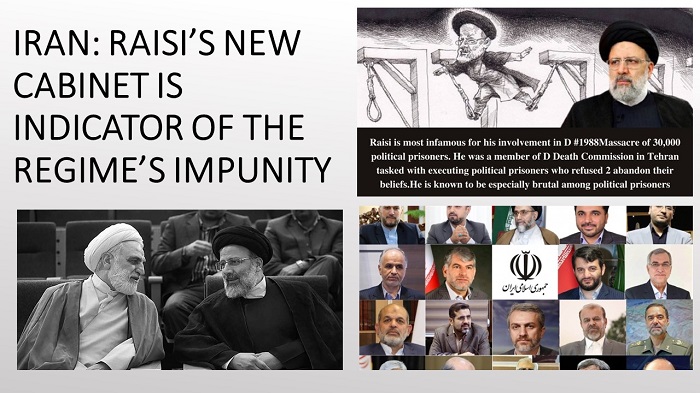
(PMOI / MEK Iran) and (NCRI): Raisi’s New Cabinet is an Indicator of the Regime’s Impunity.
The People’s Mujahedin of Iran (PMOI / MEK Iran), and the National Council of Resistance of Iran (NCRI), reported that there have never been many uncertainties about Iran’s new president, Ebrahim Raisi, and the type of administration he will lead.
Potential cabinet ministers
Raisi recently submitted a list of names for potential cabinet ministers and heads of executive agencies to the Iranian parliament, which shed some light on the situation.
The list includes some of the regime’s most hard-line officials, many of whom have been linked to human rights violations, international terrorism, and plans to profit themselves through the theft of public money.

(PMOI / MEK Iran) and (NCRI): “selection” on June 18 was part of a strategy of consolidating power inside the government.
The bombing of the Argentine
Ahmad Vahidi, Raisi’s choice to lead the Interior Ministry, is wanted by Interpol for his role in the bombing of the Argentine-Israeli Mutual Association building in Buenos Aires in 1994, which killed 85 people.
Vahidi was commander of the Quds Force, the Islamic Revolutionary Guard Corps (IRGC) foreign special operations wing, at the time, making him the Islamic Republic’s top terrorist operative and implying that he is likely responsible for hundreds of other deaths but has never been held accountable for any of them.
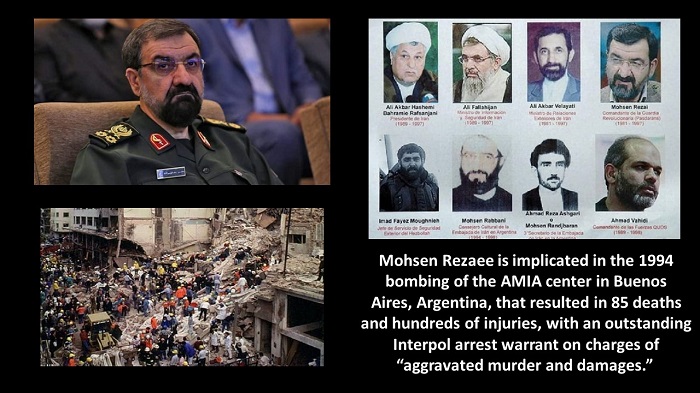
(PMOI / MEK Iran) and (NCRI): Mohsen Rezaee is implicated in the 1994 bombing of the AMIA center in Buenos Aires, Argentina.
Slection was largely arranged by Khamenei
Raisi’s June 18 “Slection” has brought that lack of accountability into clearer focus than ever before. That slection was largely arranged by Supreme Leader Ali Khamenei, who named Raisi as the head of the judiciary in 2019, ostensibly with the intention of using it as a stepping stone to the president. The same election, however, saw a widespread boycott, resulting in the lowest voter turnout in Iran’s history.
The People’s Mojahedin Organization of Iran, the country’s most powerful opposition party, has openly endorsed the boycott as a way to “vote for regime change.”
The National Council of Resistance of Iran, the (PMOI / MEK Iran)’s parent coalition, later announced that less than 10 percent of eligible voters cast ballots.
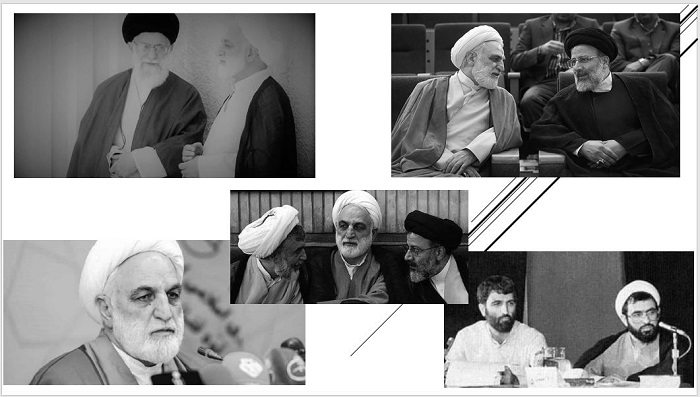
(NCRI) and (PMOI / MEK Iran): Installing butcher Mohseni Eje’i as Judiciary Chief is another step in consolidating the regime’s criminals.
Concentration on brutal repression
The regime’s single-minded concentration on brutal repression as the primary means of coping with the current growth of dissent was ironically highlighted by this concerted rejection of Raisi’s candidacy.
After successfully leading two state-wide uprisings, one in January 2018 and the second in November 2019, the PMOI decided to urge an electoral boycott. Both of these events helped to popularise anti-government slogans such as “death to the dictator,” demonstrating once and for all that the theocratic system lacked popular support.
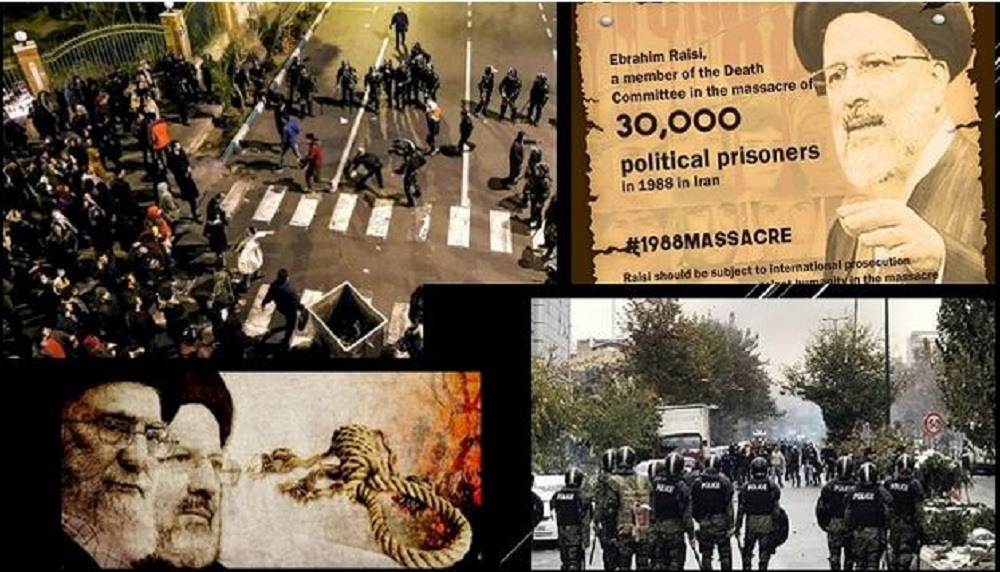
(NCRI) and (PMOI / MEK Iran): Raisi must face justice in an international tribunal.
1,500 peaceful protestors were killed
Despite their symbolic significance, both uprisings were suppressed by authoritarian rulers. The regime’s retaliation to the second revolt was exceptionally harsh, and Raisi’s control of the court was a major factor. Within days of the uprising erupting, some 1,500 peaceful protestors were killed in mass shootings, and at least 12,000 known and suspected activists were detained.
Reuters confirmed in a special report on December 23, 2019, about the deadly crackdown on November nationwide protests in Iran the death toll of 1500 that was announced by the People’s Mojahedin Organization of Iran (PMOI) on December 15, 2019.
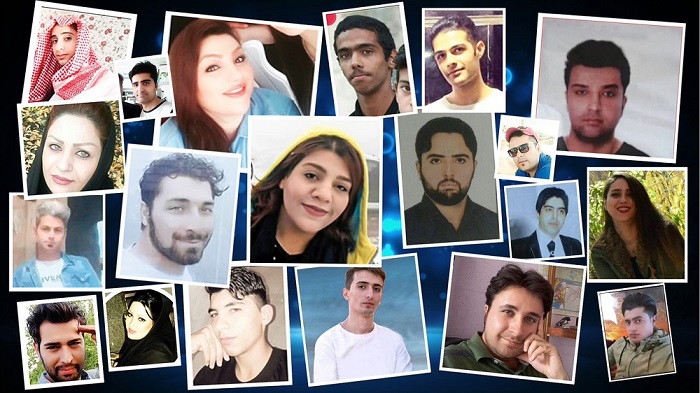
(NCRI) and (PMOI / MEK Iran): Reuters reported over 1500 have been killed, 27 children, during Iran protests that started mid-November.
Raisi’s role in the crackdown
Raisi’s role in the crackdown appears to have bolstered Khamenei’s support for him. Indeed, the supreme commander had to choose Raisi for the job knowing that it would result in mass civilian deaths in the face of popular revolt.
After all, the current president’s biggest claim to fame is his role in the 1988 massacre of political prisoners, which resulted in the deaths of an estimated 30,000 people in the aftermath of a fatwa declaring all organized protest against the ruling system to be “enmity against God.”
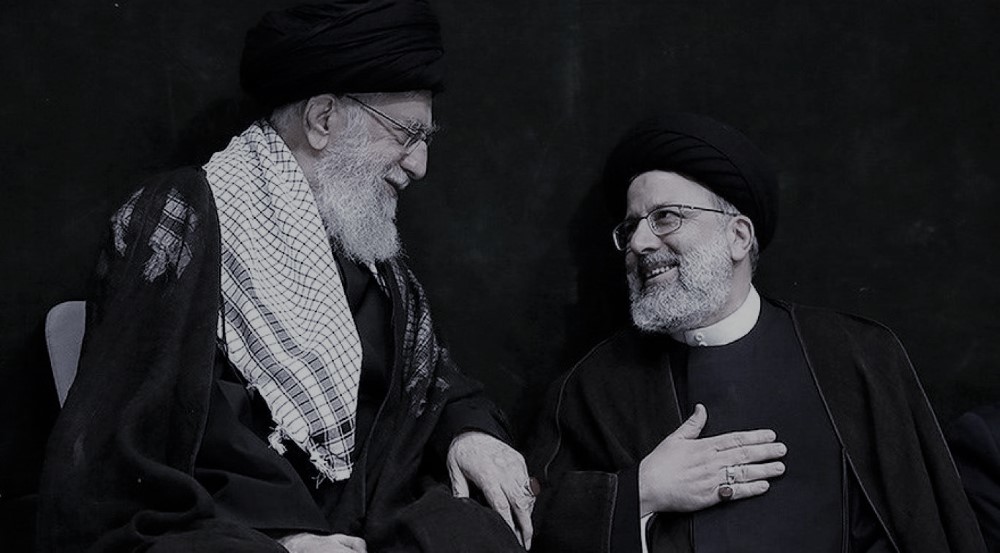
(NCRI) and (PMOI / MEK Iran): Ebrahim Raisi, the henchman of the 1988 massacre, one of the worst criminals against humanity, will be the regime’s next president.
Reinforced a sense of impunity
While many current Iranian authorities have escaped accountability for terrorist crimes, such as Ahmad Vahidi, every official implicated in the 1988 massacre has escaped accountability for 33 years and counting.
This situation has reinforced a sense of impunity in all things, as evidenced by Khamenei’s selection of Raisi as the country’s next president, followed by Raisi’s selection of Vahidi and a number of other IRGC loyalists to aid him in managing the executive branch.
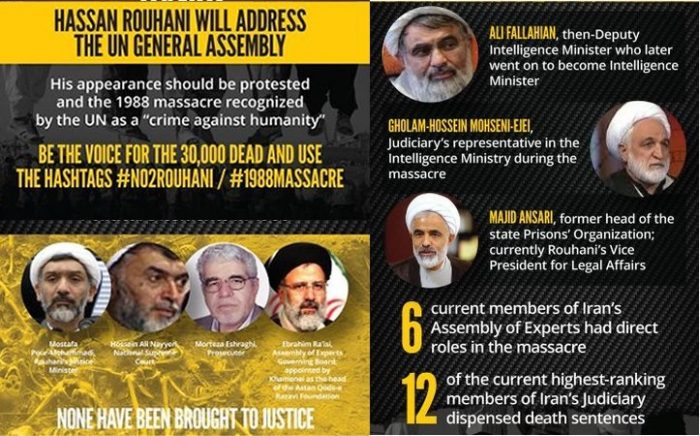
(NCRI) and (PMOI / MEK Iran): high ranking officials of the Iranian regime who are responsible for crimes against humanity, and were members of the “Death Committee” during the 1988 massacre of MEK supporters, but enjoy impunity and have actually been promoted to higher positions within the mullah’s ranks.
MEK Iran (follow us on Twitter and Facebook)
and People’s Mojahedin Organization of Iran – MEK IRAN – YouTube
